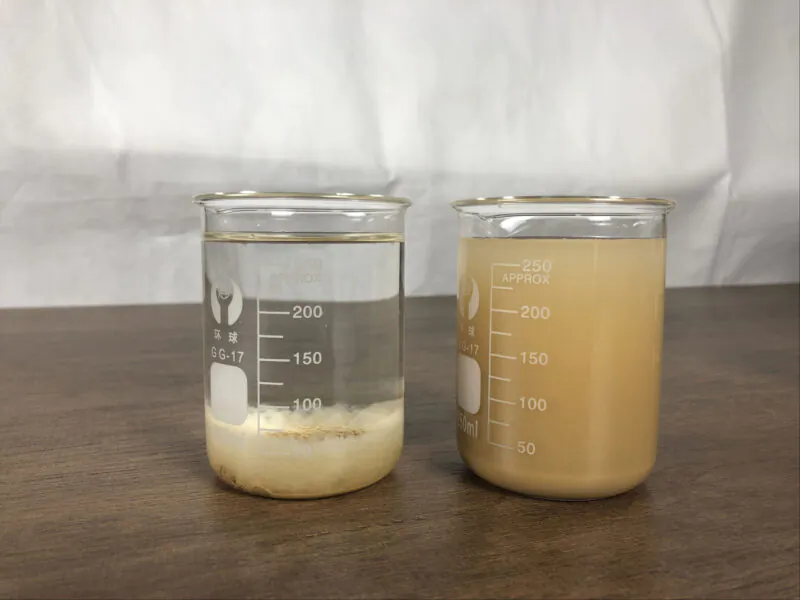Are you struggling with paper mill wastewater treatment? High levels of suspended solids (SS) and chemical oxygen demand (COD) make wastewater difficult to treat. Traditional methods are expensive, inefficient, and have low water reuse rates.
How can you reduce treatment costs? How can you improve flocculation efficiency? How can you reuse treated water? These are critical concerns for the paper industry.
At HyChron Energy Technology Co., Ltd., we have 20 years of expertise in water treatment. We provide customized solutions using water-dispersible cationic polyacrylamide (PAM) combined with polymeric aluminum chloride (PAC) and activated carbon adsorption. This method significantly improves SS and COD removal rates, reduces operating costs, and ensures compliance with discharge standards.

In this article, we will explore the characteristics of paper mill wastewater, advanced treatment processes, and real-world case studies to help businesses achieve efficient and cost-effective wastewater management!
Challenges of Paper Mill Wastewater Treatment
Paper mill wastewater contains fiber suspensions, fillers, organic compounds, and processing chemicals. The main challenges include:
✔ High Suspended Solids (SS) Content: Fine fibers, fillers, and impurities make sedimentation difficult.
✔ High Chemical Oxygen Demand (COD): The presence of organic substances makes treatment complex.
✔ Large Water Consumption & Discharge: Paper production requires significant water use, making wastewater treatment essential for environmental compliance.
Efficient SS and COD removal is crucial for wastewater reuse and regulatory compliance.
PAM + PAC Combination: Boosting Wastewater Treatment Efficiency
Traditional coagulants have limited COD removal efficiency. However, using water-dispersible cationic polyacrylamide (PAM) with PAC significantly enhances flocculation speed and reduces treatment costs.
Benefits of PAM + PAC Combination
🔹 Cost-Effective & Highly Efficient
✔ PAM + PAC work together to improve flocculation and reduce chemical consumption.
✔ Fast treatment process with simple operation, suitable for large-scale wastewater management.
🔹 Superior Pollutant Removal
✔ Optimal Dosage: PAM 50 mg/L + PAC 600 mg/L.
✔ SS removal rate reaches 96.8%, and COD removal rate reaches 87.5%.
🔹 Integrated Treatment for Better Performance
✔ Activated carbon adsorption further removes difficult-to-degrade organic pollutants, reducing COD to below 100 mg/L, meeting national discharge standards.
✔ Enables water reuse, lowering fresh water consumption and improving sustainability.
Case Study: A Leading Paper Mill Implements a 7-Step Wastewater Treatment System
A paper mill recently upgraded its wastewater treatment process, adopting an IC anaerobic + aerobic + water reuse system. This advanced 7-step treatment method significantly improved wastewater management and set a new industry benchmark.

- Pre-Treatment: Removing Large Suspended Particles
🔹 Mechanical screens & inclined filters: Remove large fibers and solid waste.
🔹 Primary sedimentation tank: Uses gravity to remove SS and primary sludge.
- Anaerobic Treatment: IC Reactor for Organic Matter Decomposition
🔹 IC (Internal Circulation) Anaerobic Reactor:
✔ Handles high organic loads and produces biogas for energy recovery.
✔ Reduces the use of alkalis and chemicals, cutting operating costs.
- Aerobic Treatment: Activated Sludge for Further Purification
🔹 Jet aeration technology: Increases oxygen transfer efficiency and accelerates organic matter breakdown.
🔹 Secondary sedimentation tank: Separates sludge from treated water. Some sludge is recirculated, while the excess is sent for dewatering.
- Water Reuse System: Deep Purification for Recycling
🔹 Flocculants (PAM + PAC) are added to further reduce SS and COD.
🔹 Filtration + activated carbon adsorption ensures COD is reduced to below 90 mg/L and SS to below 20 mg/L.
🔹 A portion of treated water is reused in production, while the remaining is sent to municipal treatment plants for safe discharge.
- Biogas Recovery: Converting Waste into Energy
🔹 Biogas collected from the anaerobic reactor is sent to a power plant for electricity generation, reducing carbon emissions.
- Odor Control: Ensuring Environmental Compliance
🔹 All foul gases are collected and incinerated, preventing air pollution.
- Sludge Treatment: Resource Utilization
🔹 Dewatering with plate-frame filter presses, increasing solid content from 3% to 50%.
🔹 Dried sludge is used as fuel in power plants or sent to hazardous waste facilities for disposal.
Economic & Environmental Benefits of Paper Mill Wastewater Treatment
- Environmental Benefits: Pollution Reduction & Water Reuse
✅ 96.8% SS removal & 87.5% COD removal, ensuring regulatory compliance.
✅ Minimizes environmental risks and improves wastewater reuse.
✅ Reduces fresh water consumption, supporting sustainability.
- Economic Benefits: Cost Savings & Resource Recovery
✅ Lower chemical consumption reduces operational expenses.
✅ Recycling sludge and biogas generation lower waste disposal costs.
✅ Biogas-to-electricity & water reuse create additional economic value.

Conclusion: Sustainable Water Treatment for the Paper Industry
With increasing environmental regulations, paper mills must adopt efficient, cost-effective, and sustainable wastewater treatment solutions. How can companies optimize wastewater treatment while reducing costs and maximizing resource recovery?
At HyChron Energy Technology Co., Ltd., we provide innovative solutions using PAM + PAC + activated carbon adsorption to help paper mills achieve low-cost, high-efficiency, and environmentally compliant wastewater treatment.
🚀 Looking to optimize your wastewater treatment process? Contact us for customized solutions! 📩
